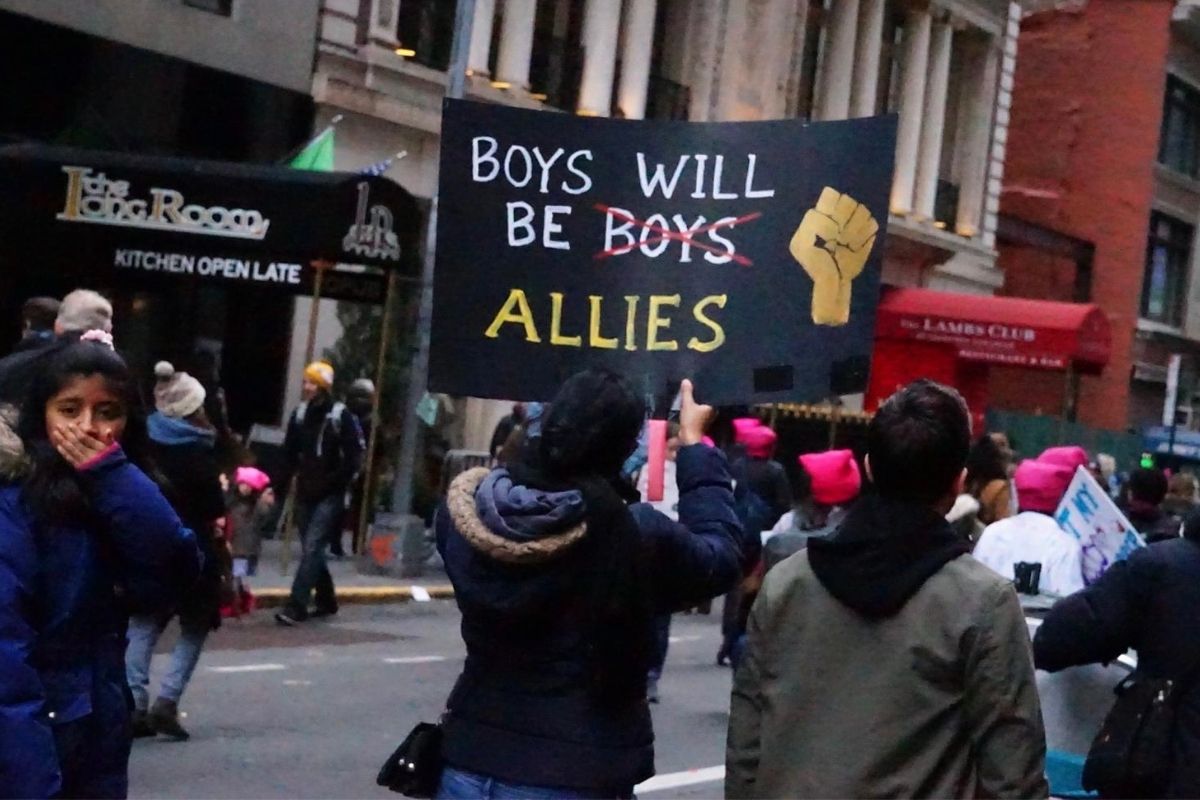Bystander Intervention: 3 Strategies to Interrupt Oppressive Behavior in the Moment

Sometimes when we see someone getting harassed, it’s just so sudden we’re not sure how to react. Maybe some guy is commenting about some woman’s body parts and making her very uncomfortable, or maybe some white woman decided to Karenize some brown person’s morning because they picked up the last roll of toilet paper in the CVS. And now they are threatening to call the police. What do you do as a witness?
That’s where Bystander Intervention comes in. Bystander Intervention is a liberatory methodology that transforms bystanders into agents of change and alliance. It empowers us to use creative and non-violent ways to de-escalate harm and helps us to have the safer communities we want.
I learned this methodology when I did the Healthy Masculinity and Bystander Intervention training at Men Can Stop Rape. Bystander Intervention is considered the most effective methodology for preventing sexual assault. While people of all (or no) genders can be perpetrators or survivors, we acknowledge that statistically speaking, most rapists are cisgender, straight men and that rape culture is a symptom of patriarchy.
However, traditional anti-rape training would then approach boys and men as if they were innate rapists waiting to happen. And while most rapists are men, most men are not rapists. Participants of these older trainings would sense that the worst was expected of them, and they would just tune out and not take it seriously. Bystander Intervention, however, assumes the best in people and approaches from the standpoint that if something wrong is going down, they would want the tools to be able to shut it down. It’s great doing this with youth. They really jump right in and engage their creativity to intervene effectively. Studies show that most people who do Bystander Intervention training not only go on to intervene when they see sexual harassment and assault happening, but they also do not perpetuate these harms themselves. For an example of how this works, you can see an excerpt from my essay “Rehearsing Consent Culture: Revolutionary Playtime” from the 2017 anthology “Ask: Building Consent Culture” edited by Kitty Stryker. It’s important to mention that when I do workshops that people of all genders participate together.
A great thing about Bystander Intervention training is that even though it was designed to interrupt sexual assault, it feels quite intersectional in its ability to be templated onto other oppressive behaviors: Bullying, transphobia, ableism, racist jokes and actions, etc. Here are 3 strategies:
- Delegate. It just takes one person to break the trance of bystander inaction when someone is being harassed in public. Witnesses can be frozen, thinking, “Well, no one else is doing anything” or “Maybe this isn’t any of my business” or fear that they will be targeted themselves if they say something, which is of course, possible. Simply looking around, making eye contact and asking, “Is anyone else not ok with this?” can help snap people out of it. At which point you can assign tasks, such as having some people confront the aggressor, while others check in on the person being targeted. It’s very important to see how the targeted person is doing. And how does one confront the aggressor?
- Distract. Any way that you can take the focus off of the targeted person is great. This can give them time to escape, and for others to check in with them to assess what their needs are. You could simply ask the aggressor for a string of directions, saying your phone is broken. “How do you get to the farmer’s market if you don’t have a car or phone?” Go! If you actually know them, you could ask them about homework, how their gig went, or anything at all that relates to your connection. If they are indeed one of your peers, it may also be good to utilize your connection to be like, “Hey! Wassup. We are in app building class together, right? I thought so. Listen can we talk somewhere private?” This way you can avoid escalating things by making it look like you are shaming them in front of everyone. Which leads into the next strategy:
- Direct. No smoke and mirrors, it is what it says. Addressing the aggressor directly. You can say things like, “Leave them alone” or “Please stop harassing that person.” Or “That’s very inappropriate/disrespectful/racist/sexist/homophobic.” It is good to assess whether other people will have your back, and how safe that is. While anyone can use this strategy, it is highly encouraged that people who share at least some of the privileged identities with the aggressor approach the aggressor. At the very least, confronting the aggressor directly can work as a distraction that allows the target person to escape or find assistance. It can also galvanize other bystanders to assist once they see someone doing the right thing. These days, a bonus tool for direct action is Document. Letting the aggressor know that they are harassing someone, and you are collecting evidence can give them pause, and can also be helpful further down the road.
Those are the 3 (or 4!) Ds of Bystander Intervention. They are good to keep in your social justice toolbelt, especially these days when it seems that those with the most power in our society are acting up more and more. You can practice scenarios with family and friends too, and literally rehearse co-creating a community of people who have each other’s backs. Isn’t that what we want?
Richard M. Wright is a healthy masculinity specialist, public speaker, author, counselor, educator and multimodal artist. He also identifies as a sci-fi geek and an intersectional Afrofuturist. His personal Wakanda resides somewhere between ‘80s Kingston & ‘90s NYC in his mind. www.richardmwright.com
